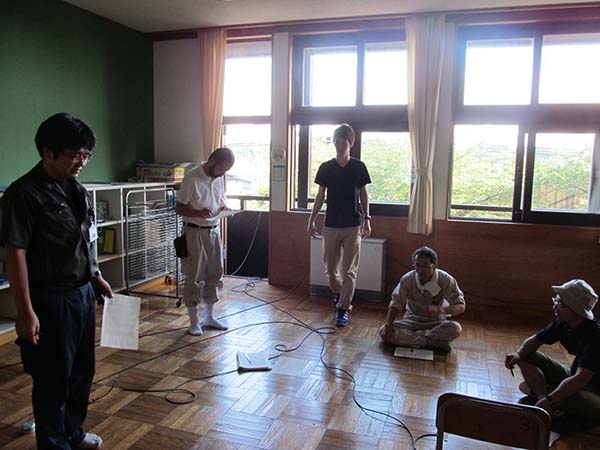Home > Research > Research Results > Research Results 2017 > Presentation of design target values for wood school and office building floors in terms of walking vibration
Update:July 11, 2017
Main content starts here.
Presentation of design target values for wood school and office building floors in terms of walking vibration
| Article title |
Relationship between performance of vertical load on wood school and office building floors and sensory evaluation of walking vibration |
|---|---|
| Author (affiliation) |
(1) Ken-ichi Sugimoto (a), Noboru Nakamura (b), Eiichi Fujino (c), Yasuyuki Sano (d), Satoshi Shindo (e), Takahisa Kamada (f), Seiichiro Ukyo (a), Masaya Gonda (g) (2) Ken-ichi Sugimoto (a), Noboru Nakamura (b), Yasuyuki Sano (d), Eiichi Fujino (c), Satoshi Shindo (e), Takahisa Kamada (f), Seiichiro Ukyo (a), Masaya Gonda (g) (a) Department of Wood Engineering, FFPRI |
| Publication Journal |
(1) Mokuzai Gakkaishi (Journal of the Japan Wood Research Society), 62(4): 101–107, July 2016, DOI: 10.2488/jwrs.62.101 (link to external site) (2) Mokuzai Gakkaishi (Journal of the Japan Wood Research Society), 63(2): 98–107, March 2017, DOI: 10.2488/jwrs.63.98 (link to external site) |
| Content introduction |
In terms of promoting the use of wood, the structure of medium- and large-scale wood buildings has attracted rising attention from building architects and structural engineers; however, the available design materials are not satisfactory. Vibrations caused by walking have become a problem when a lot of people use large rooms in medium- and large-scale wooden structures. Research on design methods that reduce walking vibration in floors is lacking. Therefore, we investigated the bending performance of floor beams in actual wood structures, including four schools and two offices. We measured acceleration induced by walking on the floors when one person walked from one end of the room to the other. At the same time, we asked whether observers around the walking route were bothered by the vibration. It was observed that when walking caused the floor to accelerate at 3–4 cm/s2, 65% of observers reported that the walking vibration did not concern them. To achieve a floor that vibrates within these characteristics, deflection of the floor beam should be designed at a length within the range of L/500–L/600 (L: span (see note)), and the natural frequency of the floor should be set at 12 Hz. A design target value based on sensory evaluation of the walking vibration of floors in such wooden classrooms and a limit value of deflection of floor beams are linked together, and the design objectives would be shown in terms of walking vibration in the future. Note: The distance between posts that support the floor beam at both ends.
Photo. walking vibration measurement and questionnaire investigation about feeling a walking vibration. (One person is walking in the middle of the picture, the others around the person are standing or sitting as questionees.) |
Copyright © Forest Research and Management Organization. All rights reserved.

